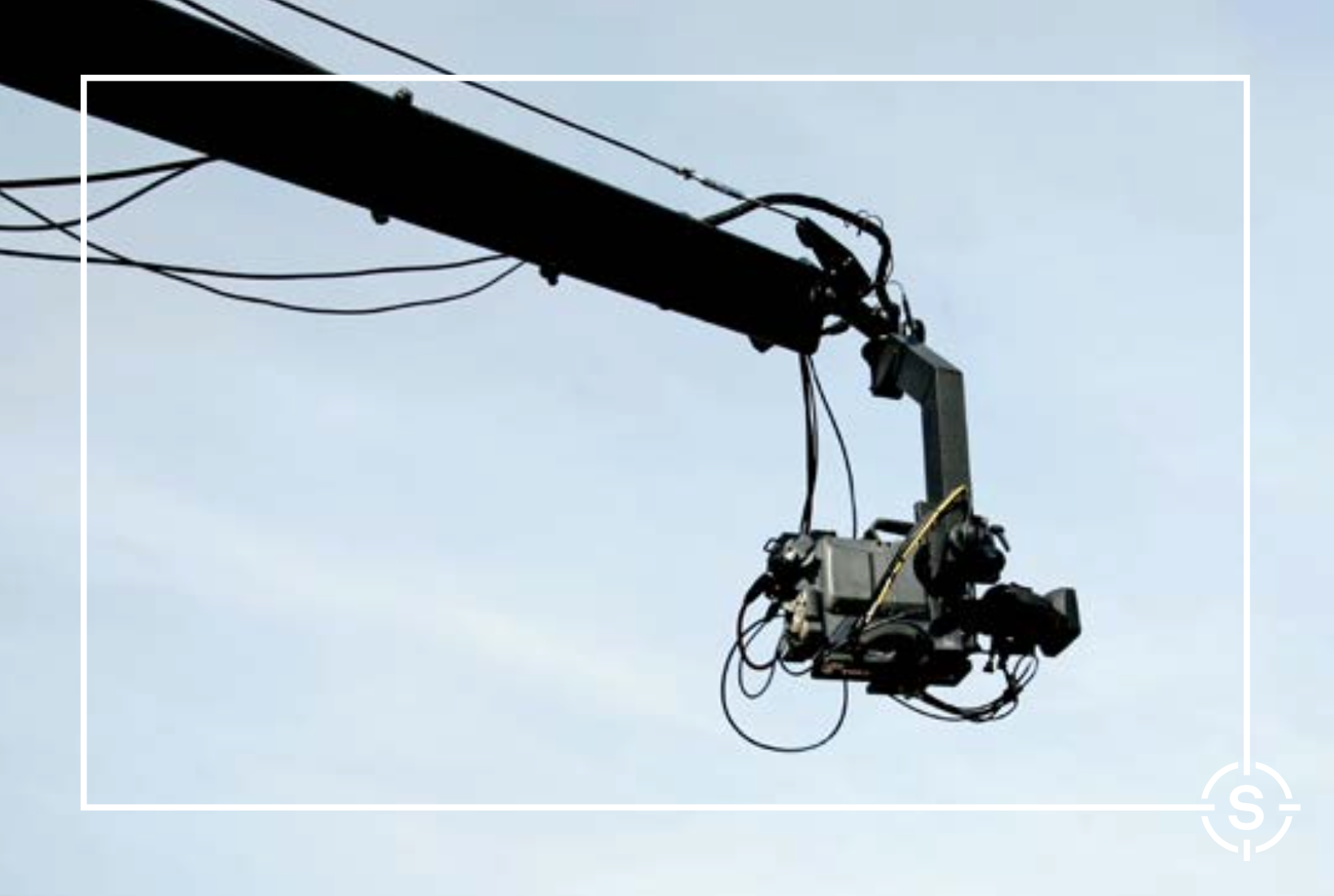Working at Heights - Cranes – camera
Te Mahi ki ngā Tiketike- Wakahiki me te Kamera

Cranes – camera
This chapter relates to the chapter on working at heights and provides guidance on using camera cranes on a production set.
This guide is primarily based on New Zealand legislation and guidance issued by WorkSafe NZ and the Ontario Ministry of Labour.
Who needs to read this?
All workers who undertake tasks using camera cranes should read and understand the section of minimum responsibilities.
Roles that have specific responsibilities over setting up and managing camera cranes should also read and understand the planning and considerations section
– this includes producers, directors, production managers, heads of departments, assistant directors, grips, and health and safety officers.
Definitions
Camera cranes means manually powered counterbalanced cranes and motorised telescoping cranes used to position cameras.
What risks do I need to look out for?
- Crane tipping over
- Electric cables and wires
- Imbalance when camera equipment is taken off and on
- Imbalance when people step on or off counterbalance cranes
- Overhead obstructions
- Persons being struck by crane or being crushed against crane
- Structural collapse of crane
Minimum responsibilities of working on camera cranes
Everyone who undertakes tasks using camera cranes should read and understand the section.
Workers should:
- only operate the equipment if they are trained and competent in the operation of the crane they are using;
- only operate the equipment in accordance with the operating instructions and appropriate codes of practice;
- ensure the safe working load of equipment is not exceeded;
- wear a safety harness where directed; and
- use seats provided where practical.
Planning and guidance considerations for camera cranes
Everyone who is responsible for, or has influence over, an activity or task in relation to setting up and managing camera cranes should read and understand this section, as well as the minimum responsibilities section.
Minimum Clearance From Overhead Electric Power Lines
There are minimum clearances from overhead conductors depending on their voltages.
Unless otherwise specified, maintain a minimum of four-metre clearance between the crane including any person or equipment on it, the swing of the arms, and the overhead conductors.
Producer / Production Manager
The Producer / Production Manager, as the person ultimately in charge of the task, should:
- consult with the director of photography and key grip as to the adequacy of any specific equipment to be used for a particular sequence or shot given the conditions; and
- ensure there is a designated person in charge of the camera crane.
The Producer / Production Manager should consider appropriate support and ensure budget and/or personnel are available to provide the minimum requirements for the production; this includes:
- hiring competent people with an appropriate or necessary level of training, experience and/or qualifications with respect to the requirements of the production;
- the number of people hired in relation to the size of the project; and
- ensuring sufficient resources, including budget, are allocated to enable appropriate and safe practices and satisfy the minimum requirements under law.
Person in charge
The key grip or their nominated representative should:
- ensure there is an appropriate communications system for those operating the crane;
- ensure operators are trained and competent
- ensure at least two people are designated as crew for the camera crane;
- consider the surface, as some cranes are designed for flat surfaces, while others are designed for operating on uneven ground – extra care must be taken for camera cranes operating on uneven surfaces;
- consider any potential overhead obstructions, and ensure that adequate clearance is maintained at all times from overhead obstructions;
- consult, if required, with the local power supplier regarding the minimum clearance from overhead electric power lines;
- ensure the crane is attended at all times while being prepared for use or while in use;
- ensure manned balanced camera cranes are adequately crewed for safe operation;
- ensure the area covered by the swing of the camera crane arms is a limited access area;
- ensure that cranes intended to be mounted by crew members are fitted with seats and restraints – workers riding the crane should use the seats and restraints where practical; and
- ensure that manual operated cranes are stress tested.
Assistant Director
The Assistant Director should ensure:
- the use of a camera crane is noted in the safety section of the call sheet; for example
~~ "a camera crane will be used while filming scene [XXXXX]. Please keep its working radius clear of people and equipment and respond to the requests of the grip in charge".

